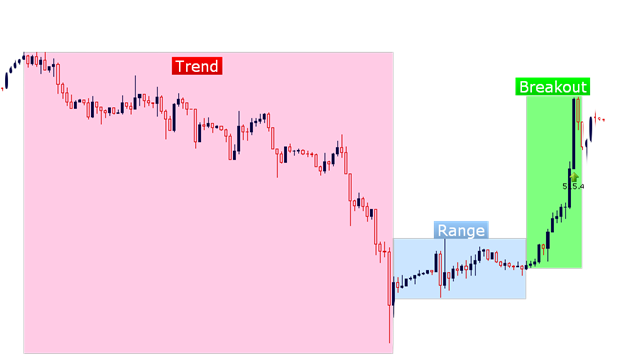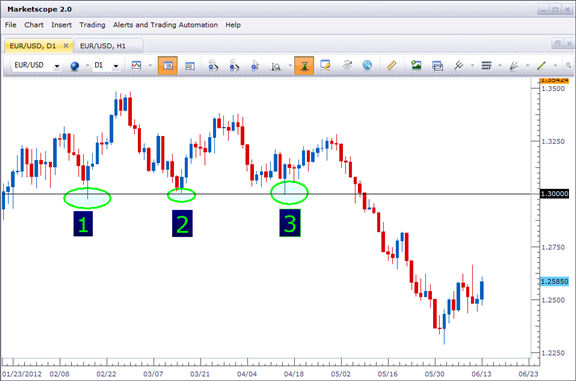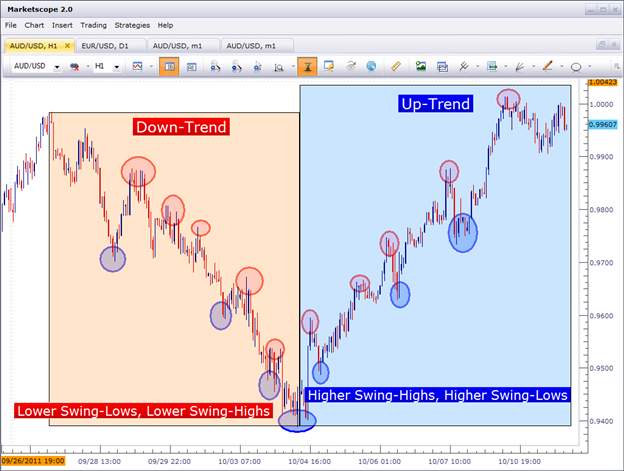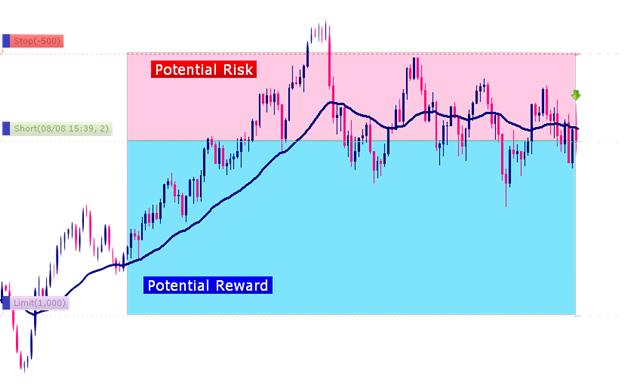At the point when exchanging markets, it is frequently helpful to have a vital approach. While the idea of exchanging on hunches and impulses – and being gainful doing as such, may sound alluring; by and by it is significantly more troublesome and far more outlandish than if one had an equation based approach with which they hope to estimate in business sectors.
There are numerous methods for doing this. This article will stroll through the essential regions that dealers need to look to when assembling their procedures.
Prior to the system is ever made, the dealer first needs to choose which economic situation they are looking exploit. In the initial segment of our How to Build a Strategy arrangement, we took a gander at this point in detail. Also, as we saw, markets will show 3 essential conditions: Trend, Range, and Breakout (as appeared in the outline beneath).

The most effective method to Build a Trading Strategy
Made with Marketscope/Trading Station
Each of these economic situations can display uniquely extraordinary tones. Extents can regularly happen amid calm markets. The support and additionally resistance that characterize ranges get to be broken when value breaks out, frequently from some type of news or boosts.
Breakouts can be quick and incensed, running rapidly to a merchants stop or point of confinement. Breakouts can be to a great degree unstable, and all things considered, these procedures should be assembled uniquely in contrast to range or pattern techniques concerning cash, and hazard administration.
Once a predisposition has started to set in the forex signals market, longer-term patterns can create. At the end of the day, this is a one of a kind condition that requires an approach not quite the same as range or drifting markets.
Once a broker has chosen which economic situation they need to manufacture their procedure for, they then need to choose which time spans they need to investigate and execute their exchanges on. In The Time Frames of Trading, we investigated the more regular interims that dealers might need to explore in light of coveted holding times.
We went further to investigate the idea of Multiple Time Frame Analysis, in which merchants can utilize a more extended term diagram to gage the general patterns or opinion that may exist in a coin match; and afterward utilizing a shorter-term graph to get a more granular look as they enter the exchange.
The most effective method to Build a Trading Strategy

Various Time Frame Analysis Intervals; arranged by James Stanley
Entering the Trade
The following stride in building a technique is to start to plan how the broker will enter exchanges. As we took a gander at in Grading Market Conditions, support and resistance can characterize ranges, subsequently characterizing breakouts while additionally offering a considerable amount of help with hazard administration in pattern based procedures.
Thusly, it can regularly profit the broker by having various instruments for indicating out which of these levels might possibly be correlated.
Step by step instructions to Build a Trading Strategy
EURUSD associating with the 1.30 level/Created with Marketscope/Trading Station
After a broker has settled on the idiosyncrasies of support and imperviousness to be used in the procedure, they then need to figure out how to review the quality of value moves. In How to Build a Strategy, Part 4: Grading Trends, we entwined a portion of the prior ideas of value activity, various time allotment investigation, and economic situations to help brokers see that they can review how "solid" a pattern has been.

(Made with Trading Station 2.0/Marketscope)
Hazard Management
In How to Build a Strategy, Part 5: Risk Management, we took a gander at what numerous brokers consider to be the most imperative piece of making, exchanging, and keeping up an exchanging approach; and that is the way in which merchants are overseeing hazard.
A lot of this part of the arrangement was based around the examination performed by DailyFX in the Traits of Successful Traders investigate ponder.
In the DailyFX Traits of Successful Traders arrangement, genuine results from genuine brokers on more than 12 million exchanges were dissected with an end goal to discover what had worked best, and how dealers could work towards those outcomes.
We took a gander at the way that while numerous brokers may win more regularly than they lose (with a triumphant rate more noteworthy than half), it was the measure of their increases as well as misfortunes that would frequently predicate their prosperity or disappointment in business sectors. We then went ahead to discuss utilizing danger to-reward proportions as a part of which the dealer stands to make more on the off chance that they are appropriate than they could lose on the off chance that they are incorrect. The photo beneath will demonstrate a 1-to-2 hazard to-reward proportion:

1-to-2 Risk-to-Reward Ratio, as outlined on FXCM Trading Station II
We then went ahead to explore the idea of influence, as laid out in How Much Capital Should I Trade Forex With, by Jeremy Wagner. This was the fourth and last portion of the Traits of Successful Traders arrangement, and gives some extremely adroit data.

From the chart, we can see that dealers with bigger parities (amongst $5,000 and $9,999) utilized lower levels of influence (appeared on the base of the diagram); and these lower levels of influence considered more noteworthy productivity.
Dealers utilizing influence of 5:1 were gainful 37.37% of the time, while merchants with parities beneath $1,000 were utilizing, all things considered, 26:1 influence – and were just productive 20.91% of the time. This is a huge deviation, as brokers utilizing a direct 5:1 influence proportion were gainful 78% more much of the time than dealers utilizing 26:1 influence.
The postulation of the fourth portion of the Traits of Successful Traders arrangement
recommends that 'brokers ought to hope to utilize a successful influence of 10-to-1 or less.'
At the point when to Execute Your Strategy
As yet, we have secured a hefty portion of the territories that brokers would need to look to when fabricating their methodologies. Maybe as essential, if not more so – is the point at which we will really be exchanging the technique that we are making.
One of the key differentiators of the FX Market is the way that it doesn't close. We talked about this theme in detail in the article 'Exchanging the World.'
Step by step instructions to Build a Trading Strategy
Diagramming the 24-hour nature of the FX Market; from Trading the World, by James Stanley
Despite the fact that the market is open 24 hours a day, value move can make on particularly extraordinary "tones" in view of what time it is, and where liquidity is being offered from.
For example, the Asian session is for the most part considered to offer slower value activity, with more grounded adherence to support and resistance and less potential for 'huge moves.' Because of this, brokers hoping to execute extend based systems might be ideally serviced by centering their entrances on the Asian session.
At 3AM ET, liquidity starts rolling in from London, which numerous merchants consider to be the "heart" of the FX Market. London is the biggest market focus, acquires the most liquidity, and soon after the open –large moves can frequently be seen on the significant money sets. Dealers that were beforehand executing range systems in the Asian session would need to be wary here, as support and resistance can be broken a great deal more effectively with the assault of liquidity originating from London. Brokers executing breakout methodologies can frequently locate the quick and unstable markets they are searching for after the London Open.
At 8AM, as the United States opens for business considerably more liquidity streams into the FX Market. This period is viewed as the "cover," when both London and New York showcase focuses are exchanging; and this is frequently the most voluminous time of the day in the FX advertise. Quick moves can be bottomless, unpredictability to a great degree high, as the potential for inversions can criticize even the most grounded range techniques.
After London closes for the day, the kind of the US Session can change a considerable amount. Normal hourly moves can abatement, and value activity can start to fade. The US Session may go up against hints of what is by and large shown in the Asian session: moderate value moves emphasized by a more prominent level of regard for beforehand characterized support and resistance levels. Visit http://usaforexsignal.com/
There are numerous methods for doing this. This article will stroll through the essential regions that dealers need to look to when assembling their procedures.
Prior to the system is ever made, the dealer first needs to choose which economic situation they are looking exploit. In the initial segment of our How to Build a Strategy arrangement, we took a gander at this point in detail. Also, as we saw, markets will show 3 essential conditions: Trend, Range, and Breakout (as appeared in the outline beneath).

The most effective method to Build a Trading Strategy
Made with Marketscope/Trading Station
Each of these economic situations can display uniquely extraordinary tones. Extents can regularly happen amid calm markets. The support and additionally resistance that characterize ranges get to be broken when value breaks out, frequently from some type of news or boosts.
Breakouts can be quick and incensed, running rapidly to a merchants stop or point of confinement. Breakouts can be to a great degree unstable, and all things considered, these procedures should be assembled uniquely in contrast to range or pattern techniques concerning cash, and hazard administration.
Once a predisposition has started to set in the forex signals market, longer-term patterns can create. At the end of the day, this is a one of a kind condition that requires an approach not quite the same as range or drifting markets.
Once a broker has chosen which economic situation they need to manufacture their procedure for, they then need to choose which time spans they need to investigate and execute their exchanges on. In The Time Frames of Trading, we investigated the more regular interims that dealers might need to explore in light of coveted holding times.
We went further to investigate the idea of Multiple Time Frame Analysis, in which merchants can utilize a more extended term diagram to gage the general patterns or opinion that may exist in a coin match; and afterward utilizing a shorter-term graph to get a more granular look as they enter the exchange.
The most effective method to Build a Trading Strategy

Various Time Frame Analysis Intervals; arranged by James Stanley
Entering the Trade
The following stride in building a technique is to start to plan how the broker will enter exchanges. As we took a gander at in Grading Market Conditions, support and resistance can characterize ranges, subsequently characterizing breakouts while additionally offering a considerable amount of help with hazard administration in pattern based procedures.
Thusly, it can regularly profit the broker by having various instruments for indicating out which of these levels might possibly be correlated.

Step by step instructions to Build a Trading Strategy
EURUSD associating with the 1.30 level/Created with Marketscope/Trading Station
After a broker has settled on the idiosyncrasies of support and imperviousness to be used in the procedure, they then need to figure out how to review the quality of value moves. In How to Build a Strategy, Part 4: Grading Trends, we entwined a portion of the prior ideas of value activity, various time allotment investigation, and economic situations to help brokers see that they can review how "solid" a pattern has been.

(Made with Trading Station 2.0/Marketscope)
Hazard Management
In How to Build a Strategy, Part 5: Risk Management, we took a gander at what numerous brokers consider to be the most imperative piece of making, exchanging, and keeping up an exchanging approach; and that is the way in which merchants are overseeing hazard.
A lot of this part of the arrangement was based around the examination performed by DailyFX in the Traits of Successful Traders investigate ponder.
In the DailyFX Traits of Successful Traders arrangement, genuine results from genuine brokers on more than 12 million exchanges were dissected with an end goal to discover what had worked best, and how dealers could work towards those outcomes.
We took a gander at the way that while numerous brokers may win more regularly than they lose (with a triumphant rate more noteworthy than half), it was the measure of their increases as well as misfortunes that would frequently predicate their prosperity or disappointment in business sectors. We then went ahead to discuss utilizing danger to-reward proportions as a part of which the dealer stands to make more on the off chance that they are appropriate than they could lose on the off chance that they are incorrect. The photo beneath will demonstrate a 1-to-2 hazard to-reward proportion:

1-to-2 Risk-to-Reward Ratio, as outlined on FXCM Trading Station II
We then went ahead to explore the idea of influence, as laid out in How Much Capital Should I Trade Forex With, by Jeremy Wagner. This was the fourth and last portion of the Traits of Successful Traders arrangement, and gives some extremely adroit data.

From the chart, we can see that dealers with bigger parities (amongst $5,000 and $9,999) utilized lower levels of influence (appeared on the base of the diagram); and these lower levels of influence considered more noteworthy productivity.
Dealers utilizing influence of 5:1 were gainful 37.37% of the time, while merchants with parities beneath $1,000 were utilizing, all things considered, 26:1 influence – and were just productive 20.91% of the time. This is a huge deviation, as brokers utilizing a direct 5:1 influence proportion were gainful 78% more much of the time than dealers utilizing 26:1 influence.
The postulation of the fourth portion of the Traits of Successful Traders arrangement
recommends that 'brokers ought to hope to utilize a successful influence of 10-to-1 or less.'
At the point when to Execute Your Strategy
As yet, we have secured a hefty portion of the territories that brokers would need to look to when fabricating their methodologies. Maybe as essential, if not more so – is the point at which we will really be exchanging the technique that we are making.
One of the key differentiators of the FX Market is the way that it doesn't close. We talked about this theme in detail in the article 'Exchanging the World.'
Step by step instructions to Build a Trading Strategy
Diagramming the 24-hour nature of the FX Market; from Trading the World, by James Stanley
Despite the fact that the market is open 24 hours a day, value move can make on particularly extraordinary "tones" in view of what time it is, and where liquidity is being offered from.
For example, the Asian session is for the most part considered to offer slower value activity, with more grounded adherence to support and resistance and less potential for 'huge moves.' Because of this, brokers hoping to execute extend based systems might be ideally serviced by centering their entrances on the Asian session.
At 3AM ET, liquidity starts rolling in from London, which numerous merchants consider to be the "heart" of the FX Market. London is the biggest market focus, acquires the most liquidity, and soon after the open –large moves can frequently be seen on the significant money sets. Dealers that were beforehand executing range systems in the Asian session would need to be wary here, as support and resistance can be broken a great deal more effectively with the assault of liquidity originating from London. Brokers executing breakout methodologies can frequently locate the quick and unstable markets they are searching for after the London Open.
At 8AM, as the United States opens for business considerably more liquidity streams into the FX Market. This period is viewed as the "cover," when both London and New York showcase focuses are exchanging; and this is frequently the most voluminous time of the day in the FX advertise. Quick moves can be bottomless, unpredictability to a great degree high, as the potential for inversions can criticize even the most grounded range techniques.
After London closes for the day, the kind of the US Session can change a considerable amount. Normal hourly moves can abatement, and value activity can start to fade. The US Session may go up against hints of what is by and large shown in the Asian session: moderate value moves emphasized by a more prominent level of regard for beforehand characterized support and resistance levels. Visit http://usaforexsignal.com/
No comments:
Post a Comment